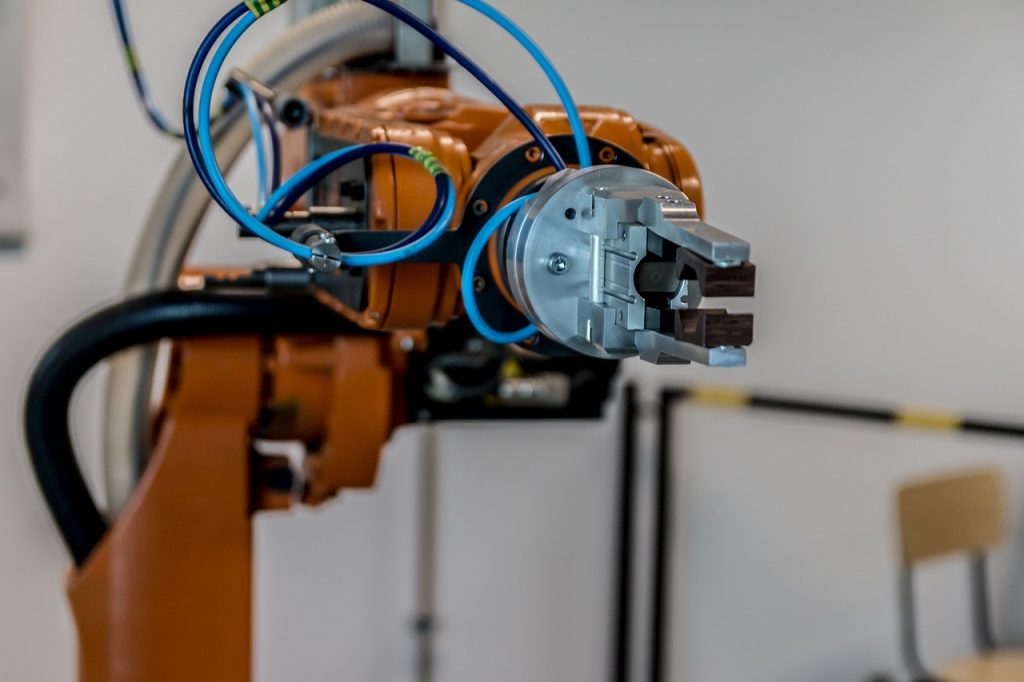The evolution of modern industry has gone through several significant phases, from the development of machinery in the industrial era to digitization in the information age. However, now we are at the beginning of another revolution: Industry 5.0, an era where human-machine integration is at the forefront of innovation. This new phase not only transforms production processes but also revolutionizes the logistics sector, increasing efficiency and improving supply chain visibility.
What is Industry 5.0?
Industry 5.0 is the response to the need to integrate advanced technologies with human skills to maximize production potential. While Industry 4.0 brought automation and digitalization to factories, Industry 5.0 aims to combine artificial intelligence, the Internet of Things (IoT), and collaborative robotics to create a synergistic work environment where humans and machines collaborate safely and efficiently.
Applications of Industry 5.0 in Logistics
The logistics sector is one of the main beneficiaries of Industry 5.0: emerging technologies are radically transforming the management of goods and information flows, improving traceability, operational efficiency, and customer satisfaction. Here are some of the key applications of Industry 5.0 in logistics:
- Predictive analysis: Big Data analysis and artificial intelligence enable predicting customer demand and optimizing stocks and delivery routes. This not only reduces operating costs but also shortens waiting times and enhances the overall customer experience;
- Real-time traceability: thanks to the Internet of Things (IoT) and smart sensors, it is possible to monitor the path of each individual item along the entire supply chain. This real-time visibility enables more efficient inventory management, more precise production planning, and greater ability to promptly respond to customer needs;
- Collaborative robotics: collaborative robots, also known as cobots, are designed to work alongside humans, improving productivity and reducing the risk of workplace accidents. In logistics operations, cobots can be deployed for picking and material handling in warehouses, speeding up processes and reducing errors;
- Blockchain: blockchain technology provides increased security and transparency in business transactions. In logistics, it can be used to track the entire history of a product, from its origin to the end consumer, reducing the risk of fraud and counterfeiting.

Benefits for the Logistics Sector
The adoption of Industry 5.0 in the logistics sector brings a series of significant advantages:
- Increased flexibility: Industry 5.0 technologies enable companies to quickly adapt to market changes and customer needs while maintaining high quality standards;
- Improved inventory management: Predictive analysis and real-time traceability enable more precise inventory management and waste reduction;
- Enhanced operational efficiency: Process automation and reduction of human errors improve the overall efficiency of logistics operations, reducing time and operating costs;
- Customer satisfaction: With faster delivery times and complete transparency in transactions, customers benefit from a safer and more satisfying shopping experience.
Industry 5.0 and Future Challenges for Logistics
Industry 5.0 is radically transforming the logistics sector, introducing new technologies and processes. With human-machine integration at the forefront of innovation, the future of logistics will be characterized by greater flexibility, traceability, and reliability, allowing companies to adapt to the challenges of an increasingly interconnected and dynamic world.
Industry 5.0 represents an incredible opportunity for the logistics sector, but also uncharted territory with significant challenges. While human-machine integration offers tangible benefits, there are also important issues to address to ensure a smooth and sustainable transition to this new era.
Challenges of data security and privacy
With the increase in interconnection between machines and computer systems, concerns arise about the security of sensitive data and the protection of privacy. It is essential to develop robust protocols to protect networks and systems from external intrusions and ensure compliance with data privacy regulations.

Workforce Reskilling
Automation and artificial intelligence will radically change the skills required to work in the logistics sector. It is essential to invest in training and reskilling the workforce to ensure that workers can adapt to new technologies and perform more specialized and high-value-added roles.
System Interoperability
With the adoption of a wide range of digital technologies, the challenge of system interoperability arises. It is necessary to develop common standards and protocols to enable seamless communication between devices and platforms, ensuring that data can be exchanged and utilized efficiently along the entire supply chain.
Environmental Sustainability
Industry 5.0 offers the opportunity to optimize production and logistics processes while reducing environmental impact. However, to fully realize this potential, it is necessary to integrate sustainability criteria into all stages of the product lifecycle and adopt eco-friendly practices to reduce greenhouse gas emissions and minimize resource waste.
Collaboration and Knowledge Sharing
Successfully addressing future challenges will require increased collaboration among companies, academic institutions, and regulatory bodies. Sharing knowledge and best practices will accelerate innovation and foster the development of shared solutions for the common challenges of the sector.

Despite all the challenges that lie ahead, Industry 5.0 offers enormous potential for logistics: by facing them with determination, the sector can prepare to successfully confront the future and seize the opportunities offered by this new industrial era.



